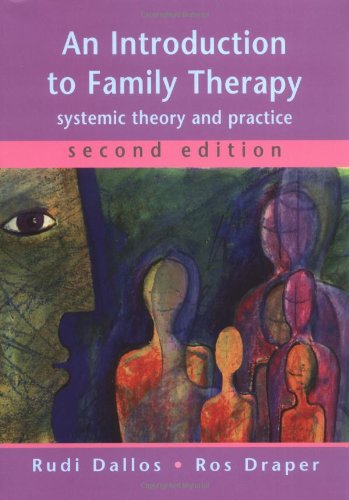Introduction Family life in the West on the one hand has typically been seen as private, as a ‘haven’ – yet at the same time there have been repeated attempts to explore, intervene in, direct, discipline and educate families. There have been attempts to correct the morals of the so- called ‘feckless’ or ‘irresponsible’ families, to see single-parent families as ‘welfare scroungers’ and so on. Aside from such overt attempts at shaping family life and conduct, there is a proliferation of more covert and insidious influences, such as images in magazines, television and films about what is desirable and acceptable – from interior decor to children’s education and sexual practices. These images and stereotypes have spread further to embrace not just families but also the activities of professionals in the business of bringing about change in families. Systemic and family therapy, like other therapies, has changed and developed to acknowledge that a consideration of people’s understandings and how these are related to the culture in which they live is vital. There is a growing overlap between the various models developed since the 1950s, the psycho- logical frameworks that professionals employ, and ‘ordinary’ people’s knowledge. Most people these days have powerful ideas and expecta- tions about what therapy will be like as well as their own explanations about what is wrong and what should change. In this introductory chapter we will consider some voices from people who have experienced systemic and family therapy and from the therapists who have worked with them. How do people experience this process called systemic and family therapy? Is it really experienced as helpful? Do they feel that something has been done to them? How does it change their relationships with each other? Is there some kind of magical experience that means severe problems can change and disappear?
چکیده فارسی
مقدمه زندگی خانوادگی در غرب از یک سو معمولاً بهعنوان یک «پناهگاه» خصوصی تلقی میشود – اما در عین حال تلاشهای مکرری برای کاوش، مداخله، هدایت، انضباط و آموزش خانوادهها صورت گرفته است. تلاشهایی برای اصلاح اخلاقیات خانوادههای موسوم به «بیمسئول» یا «بیمسئولیت»، تلقی خانوادههای تکوالدی بهعنوان «دزدان رفاه» و غیره صورت گرفته است. گذشته از چنین تلاشهای آشکار برای شکلدهی به زندگی و رفتار خانوادگی، تأثیرات مخفیانهتر و موذیانهتری مانند تصاویر مجلات، تلویزیون و فیلمها در مورد آنچه مطلوب و قابل قبول است - از دکوراسیون داخلی گرفته تا آموزش و اعمال جنسی کودکان - رو به افزایش است. این تصاویر و کلیشهها بیشتر گسترش یافته و نه تنها خانوادهها، بلکه فعالیتهای حرفهای را در کسب و کار ایجاد تغییر در خانوادهها نیز دربرمیگیرد. درمان سیستمیک و خانواده، مانند سایر درمانها، تغییر کرده و توسعه یافته است تا اذعان کند که توجه به درک افراد و چگونگی ارتباط آنها با فرهنگی که در آن زندگی میکنند، حیاتی است. همپوشانی فزایندهای بین مدلهای مختلف توسعهیافته از دهه 1950، چارچوبهای روانشناختی که متخصصان بهکار میگیرند، و دانش مردم «عادی» وجود دارد. اکثر مردم این روزها ایده ها و انتظارات قدرتمندی در مورد اینکه درمان چگونه خواهد بود و همچنین توضیحات خودشان در مورد اینکه چه چیزی اشتباه است و چه چیزی باید تغییر کند، دارند. در این فصل مقدماتی، برخی از صداهای افرادی که درمان سیستمیک و خانواده را تجربه کردهاند و درمانگرانی که با آنها کار کردهاند را در نظر خواهیم گرفت. افراد چگونه این فرآیند را به نام درمان سیستمیک و خانواده تجربه می کنند؟ آیا واقعاً مفید است؟ آیا احساس می کنند کاری با آنها انجام شده است؟ چگونه روابط آنها را با یکدیگر تغییر می دهد؟ آیا نوعی تجربه جادویی وجود دارد که به این معنی است که مشکلات شدید می توانند تغییر کنند و ناپدید شوند؟
ادامه ...
بستن ...
Year: 2005
ISBN: 0335216048,9780335216048,9780335224708
ادامه ...
بستن ...










